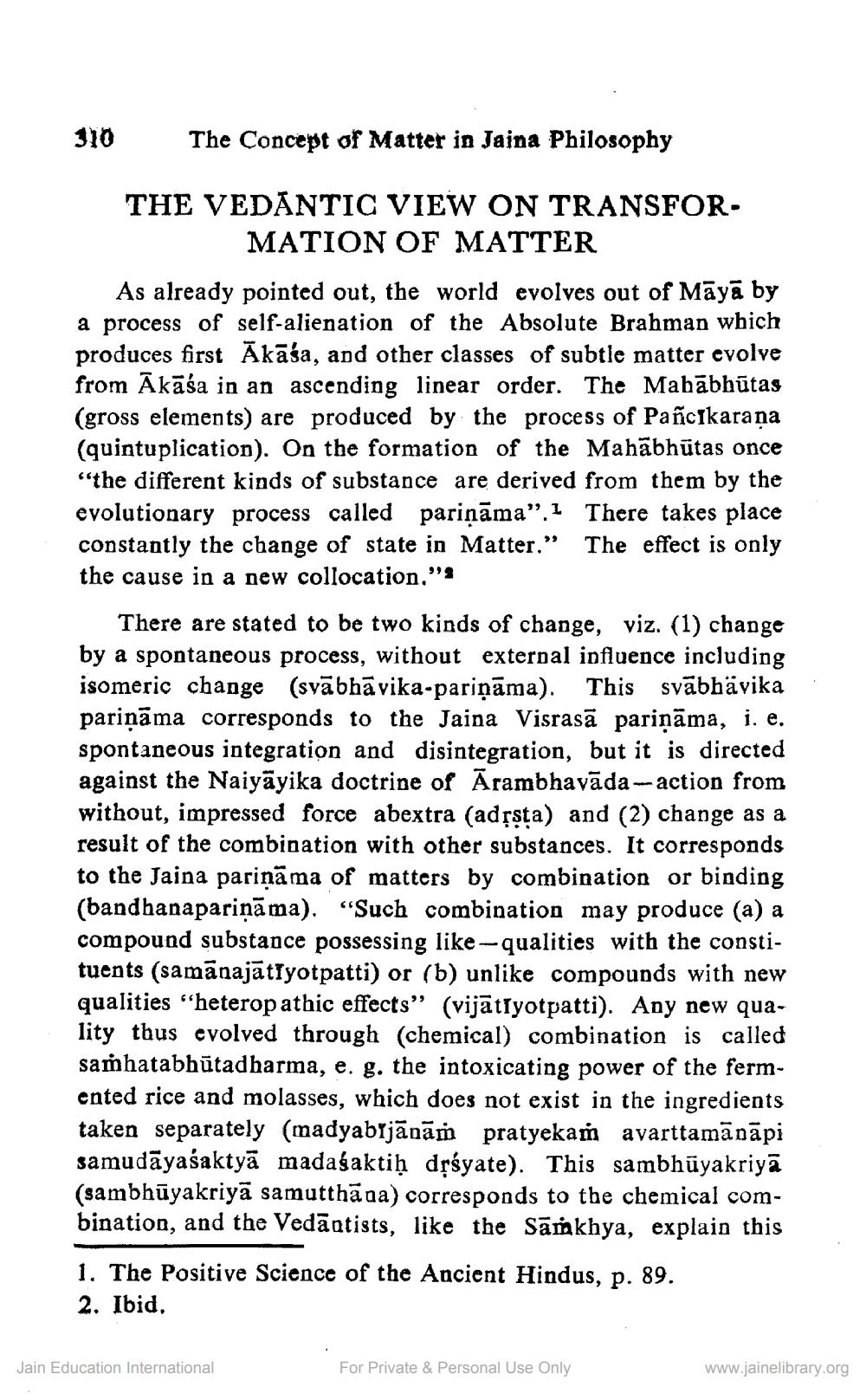________________
310
The Concept of Matter in Jaina Philosophy
THE VEDANTIC VIEW ON TRANSFOR
MATION OF MATTER As already pointed out, the world evolves out of Māyā by a process of self-alienation of the Absolute Brahman which produces first Ākāśa, and other classes of subtle matter evolve from Ākāśa in an ascending linear order. The Mahābhūtas (gross elements) are produced by the process of Pañcikarana (quintuplication). On the formation of the Mahābhūtas once “the different kinds of substance are derived from them by the evolutionary process called pariņāma". I There takes place constantly the change of state in Matter." The effect is only the cause in a new collocation."
There are stated to be two kinds of change, viz. (1) change by a spontaneous process, without external influence including isomeric change (svābhāvika-pariņāma). This svābhävika pariņāma corresponds to the Jaina Visrasā pariņāma, i. e. spontaneous integration and disintegration, but it is directed against the Naiyāyika doctrine of Arambhavāda-action from without, impressed force abextra (adssta) and (2) change as a result of the combination with other substances. It corresponds to the Jaina pariņāma of matters by combination or binding (bandhanapariņāma). “Such combination may produce (a) a compound substance possessing like-qualities with the constituents (samānajātiyotpatti) or (b) unlike compounds with new qualities "heteropathic effects” (vijātiyotpatti). Any new quality thus evolved through (chemical) combination is called samhatabhūtadharma, e. g. the intoxicating power of the fermented rice and molasses, which does not exist in the ingredients taken separately (madyabrjānām pratyekam avarttamānāpi samudāyaśaktyā madaśaktiḥ drśyate). This sambhūyakriya (sambhūyakriyā samutthāga) corresponds to the chemical combination, and the Vedāntists, like the Samkhya, explain this 1. The Positive Science of the Ancient Hindus, p. 89. 2. Ibid.
Jain Education International
For Private & Personal Use Only
www.jainelibrary.org




